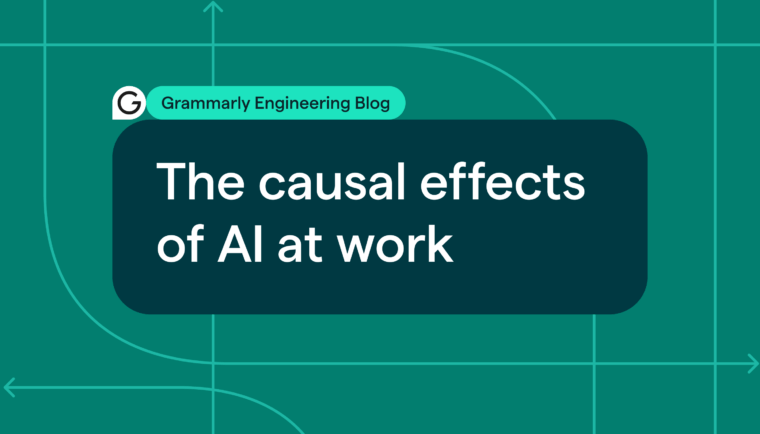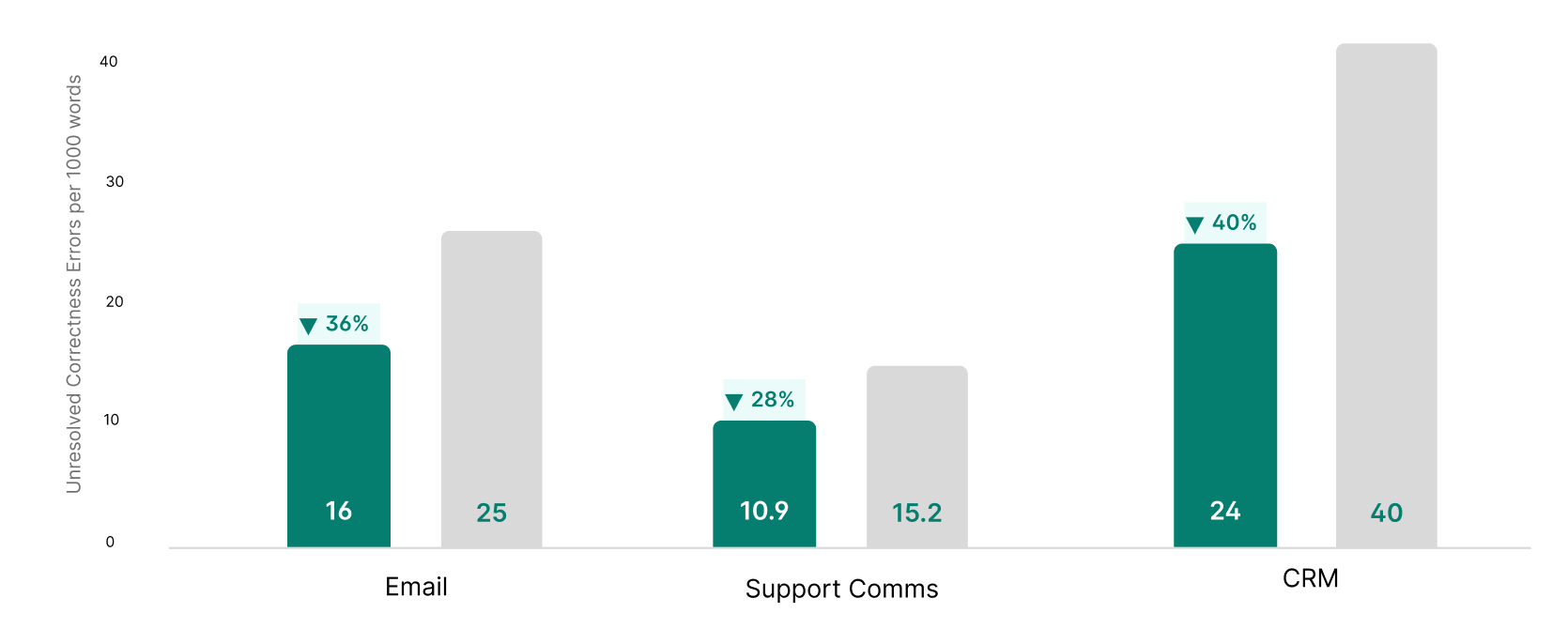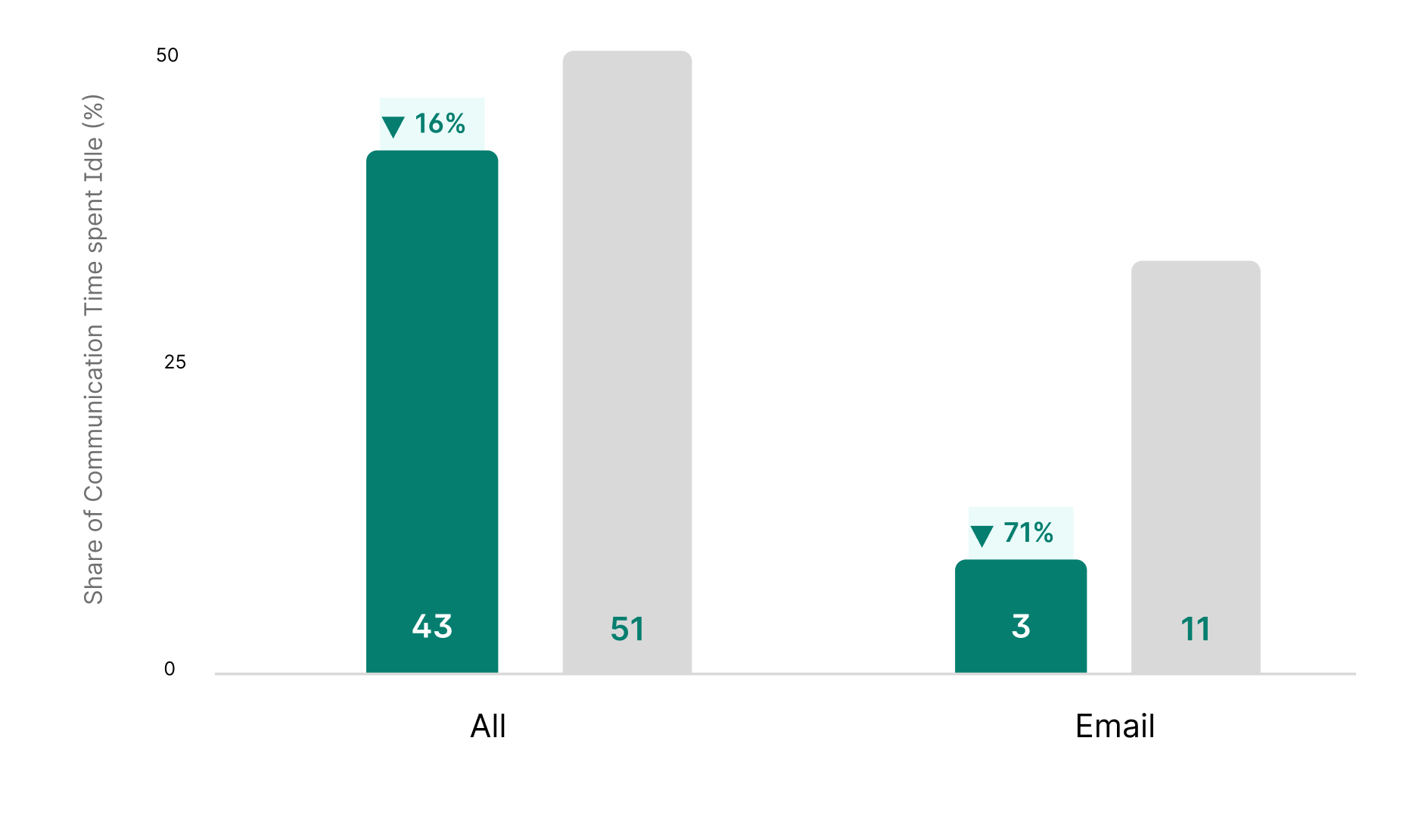
For the past decade, a zero-interest rate period encouraged industry-wide investment in SaaS spending. After 2022, when rates started to rise again, companies around the world examined their budgets and tech stacks more closely.
Nearly 90% of companies now consider it a goal to cut vendor spend, but many companies also want to keep pace with generative AI. Budgets are constrained, but there’s a desire to invest in the future—if those investments can be proven wise. This is harder than you might think. Our research shows 88% of the workweek is spent communicating with others across multiple channels, but no one has yet shown how LLMs, which should disrupt the communication ecosystem, produce a direct impact.
There are surveys available that indicate the value of new tools, but few vendors have the ability to measure the effects of the tools they offer. At best, companies can measure how users use their tools once and if they adopt them. Grammarly, however, is uniquely positioned to prove the causal effects of AI.
Grammarly has the widespread presence (across applications) and the adoption (across different types of users) to provide a true baseline. We built a version of the product that can be deployed during business trials to create a credible counterfactual that is then used to compare the impact of Grammarly over the course of the trial period. We call this version “silent” because it has no features and provides no assistance. It gives us information about the baseline communications of a team (e.g., quantity and quality) in the absence of Grammarly’s features.
This goes beyond mere A/B testing because it means we can actually build randomized control trials that quantify the causal effects, allowing us to trace the effects of Grammarly to realized business outcomes without noise from other inputs.
As a result of this research, we built the capacity to perform randomized control trials that help our customers study the with-and-without effects of adopting Grammarly, allowing them to measure and predict returns before they invest. In this article, we’ll walk through what we discovered.
Grammarly improves communication
Our research proved that using Grammarly improves communication accuracy and compliance with teams’ writing guidelines or standards.
In one study, we monitored an experimental sample of more than 450 professional workers to see the effects of using Grammarly’s AI assistant, an intelligent tool to identify and improve areas of opportunity regarding communication correctness, clarity, tone, and guideline compliance. We found that users with access to Grammarly’s AI writing assistance saw a 20% (statistically significant) reduction in errors, which translates to an average of 30 to 70 fewer errors per user per day, depending on the tool in which they are writing.

A 20% reduction is significant, but we found that this was the floor, not the ceiling. Even when workers use Grammarly’s assistant in tools with native spell-checking features, we still found a significant impact, and in contexts like long-form business memos, we discovered that an error reduction of 80% or more is even possible. In email communication, Grammarly reduced errors by 36%; in support communication, Grammarly reduced errors by 28%; and in CRMs, Grammarly reduced errors by 40%.

Not all errors, however, are just spelling and grammar. We also studied how Grammarly can improve compliance, and we found that when admins set up Grammarly with writing style preferences, compliance with company guidelines rose by 30% to 65%.
Grammarly helps professionals get more things done
Many different types of users use Grammarly, and those users can use Grammarly across a wide range of applications, some of which have native spell-check features and some don’t.
Given that baseline, we determined that giving workers access to Grammarly meant they spent 71% fewer minutes idling while composing emails (which we define as time not actively working on the email, i.e., writing, pasting, or editing text). Instead, they were able to stay focused, write more emails, and get more done.

These effects have the potential to be even more dramatic across tools without native spell-checking features, such as CRMs and developer tools. For teams writing on CRMs, for example, we showed that Grammarly caused an average 40% increase in output when we measured in words-per-minute terms.
A common method of assessing the value of SaaS tools is to survey employees about the amount of time they saved using them. This helps company leaders understand the benefits perceived by the employees, but usually begs a question from employers: “What are people doing with the time they save?”
With Grammarly, we know the time gets reinvested in the business. Teammates maintain the same total working hours irrespective of whether they have Grammarly. Teammates with Grammarly, however, can redistribute their time toward different tasks and work more efficiently. Over time and across teams, teammates worked more effectively thanks to Grammarly.
Grammarly usage translates into improved business outcomes
We found that using Grammarly translates into concrete business outcomes, showing that the improved communication and productivity described above lead to demonstrable business value.
We also like to rely on our own team members’ activities to experiment and learn about our product usage. In this section, we focused on an internal version of the experiment, which we ran to see how losing access to Grammarly would affect select teams.
Through this internal research, we found that our Customer Care team experienced a 20% drop in Customer Satisfaction (CSAT) scores when they lost access to Grammarly’s features. Newer team members experienced the worst impact, and longer-tenured members were dissatisfied with the changed experience and had to work harder to fill the gap.
Outside research also shows that higher CSAT scores are associated with higher retention rates. Research from Metrobi published earlier this year, for example, found, “Companies that maintain high CSAT scores report 35% higher customer retention rates and 28% more sales from repeat customers.”
An improvement in communication can therefore lead to a healthier business.
We have a lot of evidence that improved communication translates to improved business outcomes, and the overall success of this program shows that these experiments work and that business outcomes can be predicted and proven.
With this research, we’re able to show that Grammarly reduces errors across applications and users, as well as improving writing quality and compliance. We prove that Grammarly is more than a perk for select employees, but is, rather, a must-have tool for the business-wide communication ecosystem.
For example, one customer trialed Grammarly across 100 users for a planned deal of 600 seats, and shifted to a company-wide implementation after seeing the positive results of this research on their team.
Next steps
This research already has strong traction inside the company. Our sales teams frequently conversed with prospective customers about ROI. It was easy for them to show customers that Grammarly is useful, but it was sometimes hard to show that it provides much more value than relying on spell-checking tools native to software like Google Docs and Gmail.
As with many SaaS tools, the Grammarly buyer tends to be separated from the end user, so the value the end users might feel can be hard to see for the buyer, who might not use the tool as much.
With this research, we can provide a mechanism for demonstrating value that goes beyond what many SaaS tools and even AI tools can offer. The costs of doing business are rising, and we can show that Grammarly is a worthy investment. Grammarly is a multiplier for the value companies get from other business tools that involve communication, and not only for those companies that communicate directly with external customers.
In the future, we plan to scale our capacity to perform this research work to learn more about how AI changes work and how Grammarly can provide and prove value for our customers.
If you’re interested in improving how the world communicates and finding innovative ways to measure the effects of AI on work and student productivity, come work with us. Check out our jobs page to learn more.







